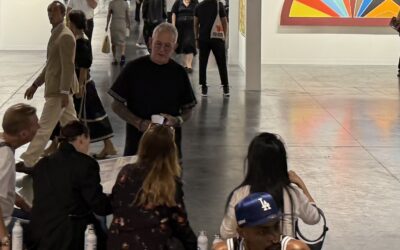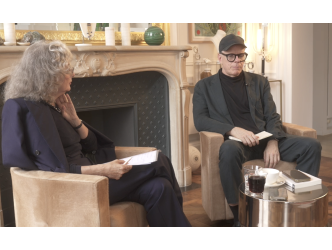Wassily Kandinsky
Each type of abstraction has its own school, and they rarely overlap. First came the great inventors of abstraction, led by Wassily Kandinsky, who, in the 1910s, began moving away from purely figurative forms in order to bring painting closer to music.
This revolution occurred in part because, nearly 80 years earlier, the invention of photography had liberated artists’ minds. It was no longer necessary for painters to try to replicate reality. The camera could do that for you.
Then, with the ebb and flow of art history, new forms of abstraction emerged, each animated by different motivations, right up to the present day.
Symbolism and messages of abstraction
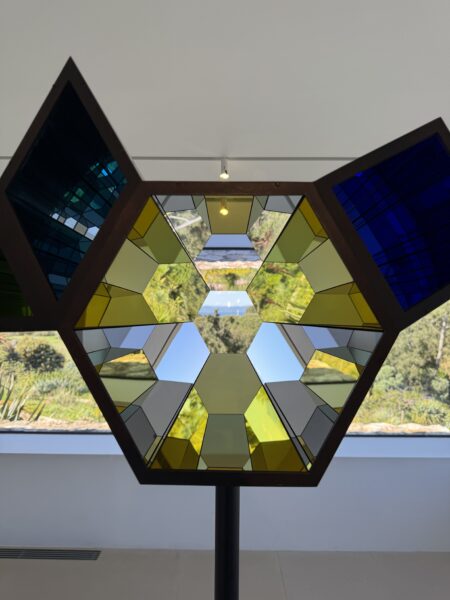
Olafur Eliasson
Ordinarily, museum exhibitions carefully compartmentalize the different strands of abstraction. You wouldn’t, for example, mix the abstract discourse of the French Yves Klein—known in the 1950s for his signature International Klein Blue—with the American Helen Frankenthaler, a key figure of Abstract Expressionism around the same period, nor with the German star Gerhard Richter, who, from the 1970s, began concealing photographic images behind his blurred compositions. Each artist has their own technique, symbolism and message.
End of a taboo
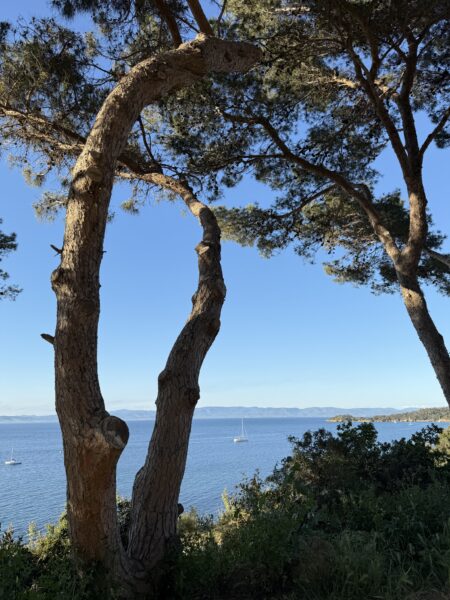
Porquerolles
Yet on the small pine-wooded island of Porquerolles, in the Var region, the Carmignac Foundation breaks with that taboo. (See here a report about the opening of the Fondation Carmignac)
Matthieu Poirier, curator of this year’s summer exhibition titled “Vertigo,” has brought together around fifty abstract works. The result is an epicurean journey into the land of color. But, far from being purely retinal art (as Marcel Duchamp would say), the work on display challenges the visitor’s curiosity.
Frank Bowling
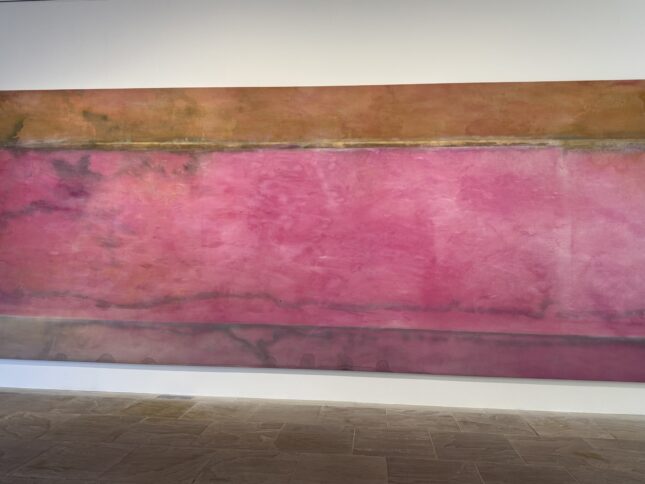
Frank Bowling
The exhibition invites us to question the meaning of these various abstractions: Poirier speaks of the artists’ “landscape unconscious.” The show opens sumptuously on a painting nearly seven meters long, in atmospheric, fading reds. It was created in 1973 by British artist Frank Bowling (born in 1934), who is only now gaining international recognition. It hangs alongside a small 2009 painting by Richter. Dominated by vivid yellow and created using a squeegee, this work reveals an infinity of layered colors underneath.
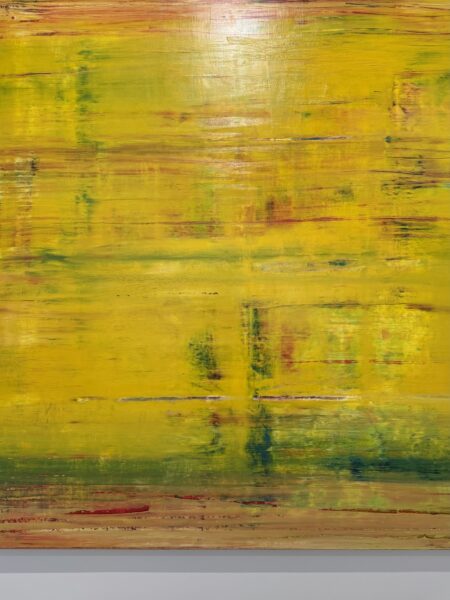
Gerhard Richter
Yves Klein
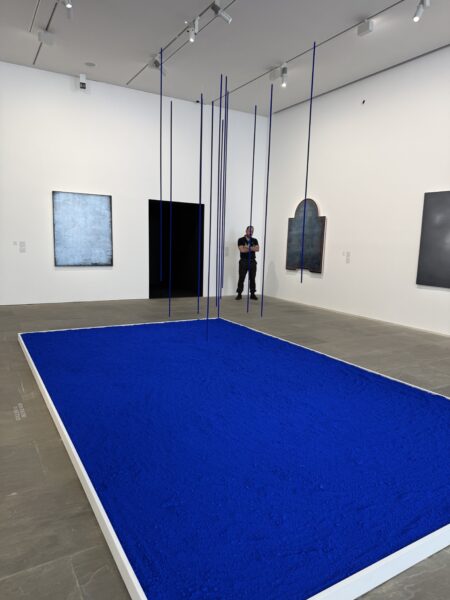
Yves KLein
The exhibition’s apotheosis can be found in the next room with a “pool” by Yves Klein from 1957 (the artist is one of the most represented in the show). A basin of pure blue pigment offers the eye a literal plunge into color. The prematurely deceased Klein, forever in search of an unattainable absolute, once declared: “Blue is beyond dimensions.”
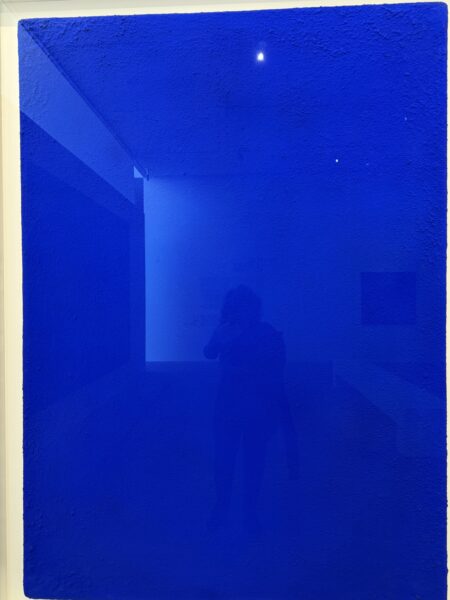
Isabelle Cornaro
 James Turrell
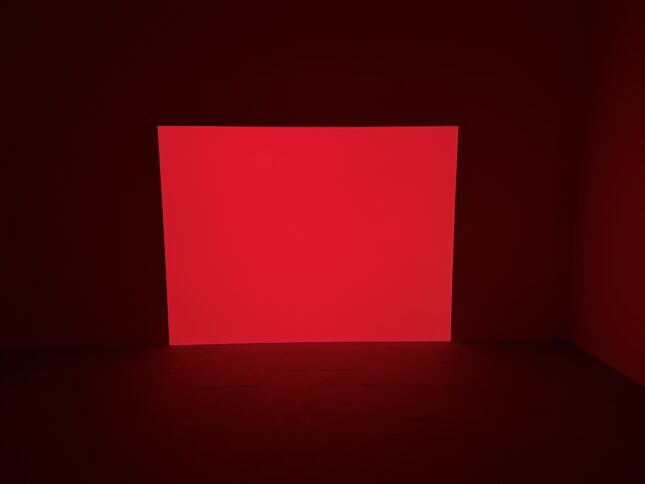
The exhibition continues its exploration into abstraction reduced to its most essential form: a pigment sprayed directly onto the wall by French artist Isabelle Cornaro (born in 1974), or the light/abstraction of a projected red square by American star James Turrell (born in 1943), or even a politically charged, polychrome work veiled in gray by Thu Van Tran (born in 1979), evoking the toxic sprays released by the US military during the Vietnam War.
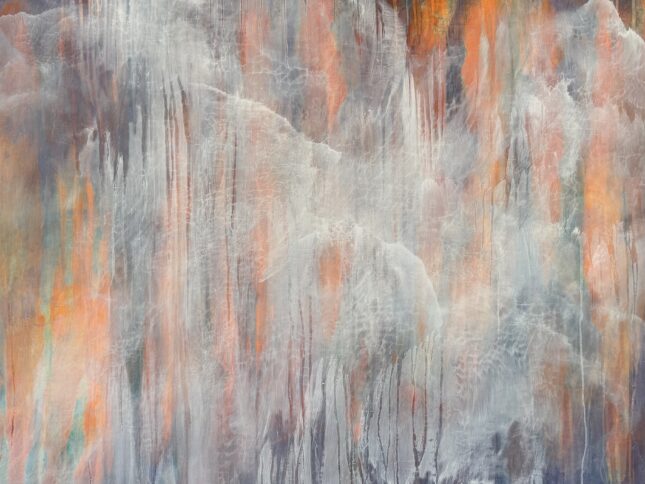
Thu Van Tran
The exhibition could expand endlessly—and in an ideal version, might even return to the origins of abstraction with the rediscovered pioneer Hilma af Klint, the Swedish artist who painted abstract forms to reach a mystical dimension.
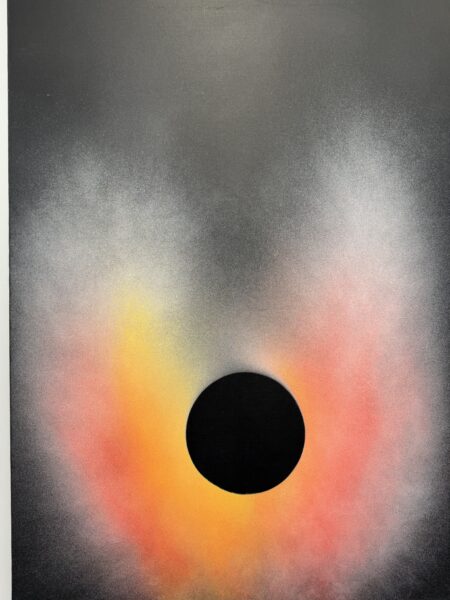
Rotraut
After all, her goal—like that of many works in “Vertigo”—was “to paint a paradisiacal beauty.”
A fitting antidote to the torments of our age.
Through November 2. www.fondationcarmignac.com/fr
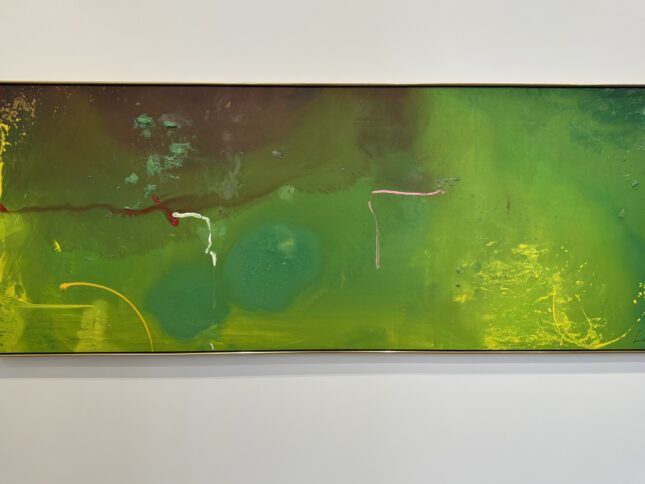
Helen Frankenthaler
Support independent news on art.
Your contribution : Make a monthly commitment to support JB Reports or a one-off contribution as and when you feel like it. Choose the option that suits you best.
Need to cancel a recurring donation? Please go here.
The donation is considered to be a subscription for a fee set by the donor and for a duration also set by the donor.



